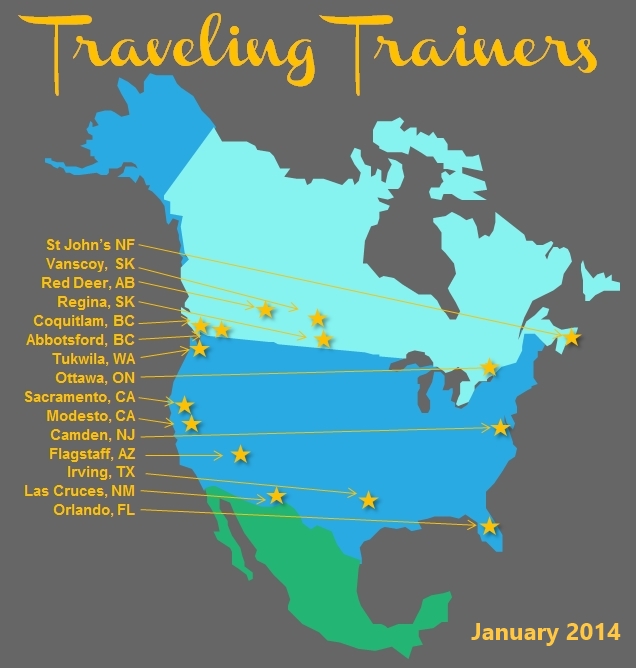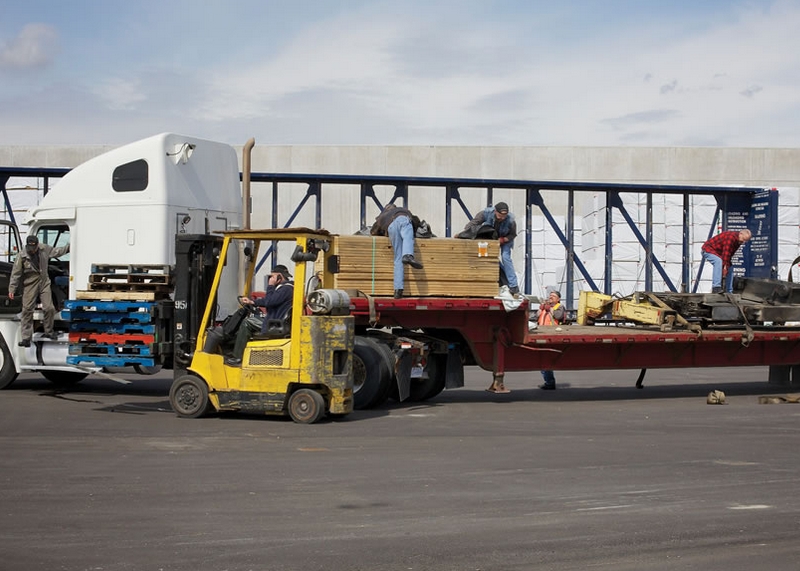We’re starting the year off with lots of great safety training news in our January 2014 IVES Update Newsletter, including…
- Safety training is overrated.
- What’s your trainer IQ?
- A question regarding scissor lift operators.
- What’s Wrong With This? photo and answer.
- January 2014 revisions summary.
- Interesting article links.
- Trade show & events schedule.
- Incident report on a forklift-related fatality in Boise.
- But first check out all the places we delivered training this month…

The article below was written by Joe Stevens on The OH&S Blog. Joe hits the nail right on the head with this article. Diligent, ongoing follow up and support of training after its completion is easily the most vital component of an overall safety program if success (change of behavior) is expected. Kudos – great article!
Safety Training is Overrated
Before I get pummeled by every safety manager, trainer, and supervisor, let me explain why safety training is overrated. It is not because safety training isn’t important, it’s precisely because it is so important that it needs to change.
In virtually every company we work with, safety training is provided on a regular basis. Often it is scheduled months or even a year in advance. Training courses are developed and materials provided. Knowledgeable people go through the course material, sometimes with recommended hands-on applications to ensure that the trainees are following and understand how to apply the training. But then what happens? Generally, what happens is that the next month, a different topic is covered, and no matter how professionally and well done, it is not as effective as it could be. Let me repeat that: No matter how well done, the training is not as effective as it could be.
The missing ingredient, in the vast majority of cases, is follow-up. Think of anything you deal with in life to confirm this. When there is no follow-up or follow through, what you have been told or learned fades from memory. What makes training more effective, and enhances learning, is thorough follow-up. The most effective training I have seen is delivered in two parts. The first part is comprehensive training that engages workers and involves hands-on demonstrations with as many people as is feasible. The next month, instead of moving on to the next topic, a review of the previous month’s training is conducted. This time, there are more hands-on, more engagement, and quizzes to make sure that everyone understands the topic. The quizzes should be short, specific, and on point for the business. They should not be generic quizzes that are developed to cover a broad range of industries.
One of the benefits of conducting training in this way is the increased effectiveness of the initial training. Because trainees know that the following month they will be engaged and tested on what they have learned in this training, they tend to pay closer attention and, after the training, to inquire if they don’t fully understand something that was covered. That level of interest is difficult to achieve if the trainees know that the training is one and done.
So if a company provides training every month, instead of 12 monthly topics, only six will be covered in a year. The value of six very effective trainings far outweighs the value of 12 topics where attention is limited and application is lacking. Safety training is too important to rely one session with no follow-up, no matter how excellent the initial training is. To get full value, follow up and follow through.
[Source: www.ohsonline.com]
What’s Your Trainer IQ?
 An aerial work platform operator checks all of the functions of the lower controls during a pre-use inspection. Satisfied with the inspection, the operator then climbs into the platform to check the upper controls only to find they do not work. Returning to the lower controls, the operator re-checks them and is perplexed to discover that they are working just fine.
An aerial work platform operator checks all of the functions of the lower controls during a pre-use inspection. Satisfied with the inspection, the operator then climbs into the platform to check the upper controls only to find they do not work. Returning to the lower controls, the operator re-checks them and is perplexed to discover that they are working just fine.
Q – If there is nothing operationally wrong with the aerial lift, why did the lower controls function properly while the upper ones did not?
Ask Bob
Q: Hi Bob, I looked all through the OSHA regulations and can’t find any official wording that says the operator of a scissor lift has to keep both feet on the platform at all times like I was told during my training class with IVES. Do you know where I can find anything official that addresses it?
A: OSHA does not have anything to say about it in any regulations but they do reference ANSI standards when it comes to aerial lifts. Below is some wording that I took right from ANSI A92.6 which is the safety standard for Self-Propelled Elevating Work Platforms (scissor lifts). You will find this very wording in the ANSI Manual of Responsibilities that is in the weather resistant storage compartment on any scissor lift – at least it should be.
8.10 Operator warnings and instructions.
(9) Personnel footing. Personnel shall maintain a firm footing on the platform floor while working thereon. Climbing by occupants on the mid-rail or top-rail of the aerial platform is prohibited. The use of planks, ladders, or any other devices on the platform for achieving additional height or reach is prohibited.
I hope this gives you what you are looking for! Thanks, Bob.
What’s Wrong With This?
This month we’re sharing WorkSafeBC’s WWWT photo! Can you spot what’s wrong in the scene below? Stay tuned, we’ll share the answers with you next month.

Answer to Last Month’s WWWT?
Last month we showed you this photo where the operator is leaning outside of the cab in order to see his forks. As an operator, you should remain inside the cab at all time as it is designed to keep you safe in case of a tip or roll-over. In the event of a roll-over you should hold tightly to the steering wheel, brace your feet on the floor and lean away from the direction of the fall.
January 2014 Revisions Summary
In December’s newsletter we posted a list of upcoming revisions to various training materials. In case you missed it, you can view it in last month’s newsletter!
Interesting News Articles
- View an interactive map of OSHA’s local emphasis programs… more
- Ontario construction worker killed after being trapped… more
- Saskatchewan introduces new Worker’s Comp legislation… more
- OSHA proposes fines totaling $91,000 for safety violations in worker fatality… more
- Australian ballet uses forklift center stage (pictured below)… more
Incident Report
Boise, Idaho — A worker has died after being pinned beneath a forklift behind one of the state Capitol buildings in downtown Boise.
Police spokeswoman Lynn Hightower says it appears the man was operating a forklift as it was being unloaded from a trailer and that he fell out of it when it tipped over.
The victim was an employee of recycling company. He and two co-workers were at the state building to move furniture when the accident happened.
Officials with the Occupational Health and Safety Administration in Boise say they are investigating.
[Source: www.magicvalley.com]
Upcoming Events
We’ll be exhibiting at the following trade shows and conferences in 2014:
- NDSC’s 41st Annual Safety & Health Conference. Feb 4-6
- Pacific Rim Safety & Health Conference. May 7-9
- ASSE Professional Development Conference & Expo. June 8-11
- National Safety Council Congress & Expo. Sept 14-19
Client Testimonials
“The class was phenomenal.” Hector, Schlumberger.
“I am extremely satisfied with the current structure and organization of this program. Additionally, the trainer was fantastic!” Robert, CA Dept of Corrections & Rehab.
“Excellent program, well delivered!” John, BC Ferry Services Inc.
Did you enjoy this newsletter? Sign up for our newsletter to receive more like this!